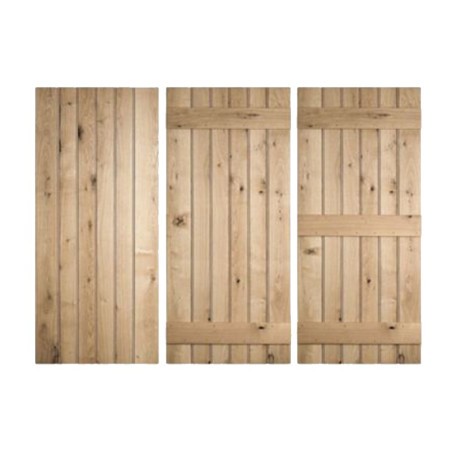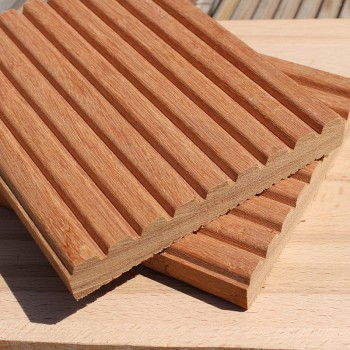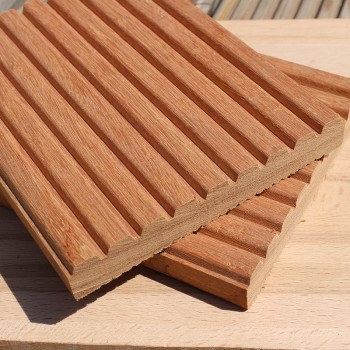The height of the fence, the terrain's soil composition as well as the amount of frost are just a few of the...
- All Categories
-
Structural Timber

Structural Timber
A selection of the finest Structural Timber products on the market.

NEED HELP?
Our expert team are on hand to help you when you need it! Simply give us a call on
01536267107
OR
GET IN TOUCH -
Outdoor Timber

Outdoor Timber
A selection of the finest Outdoor Timber products on the market.

NEED HELP?
Our expert team are on hand to help you when you need it! Simply give us a call on
01536267107
OR
GET IN TOUCH -
Indoor Timber
- Solid Hardwood Flooring
- Oak Flooring
-
Solid Wood Joinery Products
- Kiln Dried Oak Board Packs
-
Solid Wood Doors
- All Solid Oak Doors
- Prestige Solid Oak Doors
- Priory Solid Oak Doors
- All Solid Ash Doors
- Prestige Solid Ash Doors
- Priory Solid Ash Doors
- All Solid Douglas Fir Doors
- Prestige Solid Douglas Fir Doors
- Priory Solid Douglas Fir Doors
- Door Casing and Lining Sets
- Ash Door Casing and Lining Sets
- Douglas Fir Casing and Lining Sets
- Kiln Dried Interior Cladding/Panelling
- Treatments

Indoor Timber
A selection of the finest Indoor Timber products on the market.

NEED HELP?
Our expert team are on hand to help you when you need it! Simply give us a call on
01536267107
OR
GET IN TOUCH -
Custom Cutting
.jpg)
Custom Cutting
A selection of the finest Custom cut products on the market.

NEED HELP?
Our expert team are on hand to help you when you need it! Simply give us a call on
01536267107
OR
GET IN TOUCH -
Express Delivery

Express Delivery
A selection of the finest Express Delivery products on the market.

NEED HELP?
Our expert team are on hand to help you when you need it! Simply give us a call on
01536267107
OR
GET IN TOUCH -
Fuels

Fuels
A selection of the finest Fuels products on the market.

NEED HELP?
Our expert team are on hand to help you when you need it! Simply give us a call on
01536267107
OR
GET IN TOUCH -
Clearance & Offers

Clearance
A selection of the finest Clearance products on the market.

NEED HELP?
Our expert team are on hand to help you when you need it! Simply give us a call on
01536267107
OR
GET IN TOUCH - Help & Info
Latest posts
-
 How Deep Should a Fence Post Be Set?Read more
How Deep Should a Fence Post Be Set?Read more -
 What is The Most Modern Skirting Board?03/14/2025Read more
What is The Most Modern Skirting Board?03/14/2025Read moreModern skirting applications achieve their best results through combinations of modern design principles with...
-
 Are Solid Wood Doors Energy Efficient?02/14/2025Read more
Are Solid Wood Doors Energy Efficient?02/14/2025Read moreEnergy costs have dramatically increased during the past three years and show no signs of decreasing soon. With that...
-
 Oak Worktops: The Ultimate Guide for Your Kitchen01/17/2025Read more
Oak Worktops: The Ultimate Guide for Your Kitchen01/17/2025Read moreAt UK Timber, our stance on this is loud and clear! It's no secret that Oak Worktops have much to offer...
-
 Should You Oil or Stain Oak Doors? Your Complete Guide12/16/2024Read more
Should You Oil or Stain Oak Doors? Your Complete Guide12/16/2024Read moreIf you're looking to enhance your oak doors, you've likely wondered whether oiling or staining is the better choice....
-
 Do Raised Bed Kits Need a Base?11/06/2024Read more
Do Raised Bed Kits Need a Base?11/06/2024Read moreAn elevated gardening bed is another way to describe what’s typically known as a raised bed kit and is a way to store...
-
 8 Timeless Timber Garden Features to Transform Your Outdoor Space08/16/2024Read more
8 Timeless Timber Garden Features to Transform Your Outdoor Space08/16/2024Read moreAdding timber features to your garden does something more than just make a statement in a yard; it gives it some of...
-
 What is the Best Stain for Solid Oak Doors?06/27/2024Read more
What is the Best Stain for Solid Oak Doors?06/27/2024Read moreSolid oak doors are by far a classic choice for any house, offering strength, versatility, natural beauty and a touch...
-
 Decking vs. Patio: Which Is the Best Option for Your Home?04/26/2024Read more
Decking vs. Patio: Which Is the Best Option for Your Home?04/26/2024Read moreDecking can certainly bring a warm feel to your garden décor —not to mention an abundance of character. This type of...
-
 Is Hardwood Really Better Than Laminate?12/12/2023Read more
Is Hardwood Really Better Than Laminate?12/12/2023Read moreChoosing between hardwood and laminate ultimately comes down to lifestyle factors and personal taste. But for...
Blog categories
Search in blog

Should You Oil or Stain Oak Doors? Your Complete Guide
If you're looking to enhance your oak doors, you've likely wondered whether oiling or staining is the better choice. Both options offer distinct benefits, but making the right choice depends on several factors. Here at UK Timber, we’ll explore everything you need to know about finishing oak doors, with our expertise in mind.
Understanding Your Oak Door
Oak doors are prized for their natural beauty and durability. The wood's distinctive grain pattern and rich character make it a standout choice for both period properties and modern homes. But leaving oak unfinished isn't an option - the wood needs protection to maintain its beauty and prevent damage.
The Case for Oiling Oak Doors
Oiling brings out oak's natural beauty in a way few other finishes can match. It soaks into the wood, enhancing the grain pattern while providing protection from within. Danish oil and tung oil are popular choices for oak doors.
Benefits of oiling include:
- Brings out the natural warmth and character of the wood
- Easy to maintain with simple top-up applications
- Allows the wood to breathe
- Straightforward DIY application
- Can be refreshed without stripping
The main drawback? You'll need to re-oil periodically to maintain protection, typically every 6-12 months depending on wear and exposure.
Why Consider Staining?
Staining offers a different approach to door finishing. It changes the wood's colour while providing protection, often with a more durable finish than oil.
Key advantages of staining:
- Wide range of colour options
- Longer-lasting protection
- Better UV resistance
- Less frequent maintenance needed
- Strong surface protection
The trade-off? Stains can mask some of oak's natural beauty, and repairs are more challenging if the finish gets damaged.
Making Your Decision
Your choice between oil and stain should depend on:
Location Indoor doors often do well with oil finishes, while external doors might benefit from stain's extra protection.
Sunlight Exposure Does your door get direct sunlight? Stain typically offers better UV protection.
Maintenance Preference Happy to do regular maintenance for a natural look? Oil might be your best bet. Prefer a more hands-off approach? Consider staining.
Practical Tips for Application
Whichever finish you choose, proper preparation is crucial:
- Sand the door thoroughly
- Clean off all dust
- Work in a well-ventilated area
- Apply thin, even coats
- Allow proper drying time between coats
For oils:
- Apply with a lint-free cloth
- Work in the direction of the grain
- Build up multiple thin coats
For stains:
- Use a good quality brush or cloth
- Apply evenly to avoid patchy results
- Consider a test patch first
Looking After Your Finished Door
Regular maintenance keeps your door looking its best:
Oiled doors:
- Clean with a soft cloth
- Re-oil when the surface starts looking dry
- Spot-treat worn areas as needed
Stained doors:
- Clean with a damp cloth
- Check annually for wear
- Refinish when the protection starts to fail
Both oil and stain are excellent choices for oak doors when properly applied. Oil offers a natural look with simpler maintenance, while stain provides longer-lasting protection and colour options. Your choice should reflect your priorities - whether that's showcasing oak's natural beauty or achieving a specific look with minimal upkeep.
Looking for high-quality oak doors or expert advice? Browse our range of internal and external solid oak doors or get in touch with our team here at UK Timber for personalised recommendations.
Related posts
-
 4 REASONS WHY COMPOSITE DECKING IS A WORTHWHILE INVESTMENT
August 16th 2022Read more
4 REASONS WHY COMPOSITE DECKING IS A WORTHWHILE INVESTMENT
August 16th 2022Read more -
 OAK FLOORING VS PINE FLOORING - WHICH ONE WINS?
July 21st 2023Read more
OAK FLOORING VS PINE FLOORING - WHICH ONE WINS?
July 21st 2023Read more -
 THE ADVANTAGES OF USING OAK FOR HOME AND GARDEN PROJECTS
July 21st 2023Read more
THE ADVANTAGES OF USING OAK FOR HOME AND GARDEN PROJECTS
July 21st 2023Read more -
 ENHANCE YOUR GARDEN WITH A PERGOLA OR TERRACE
July 21st 2023Read more
ENHANCE YOUR GARDEN WITH A PERGOLA OR TERRACE
July 21st 2023Read more -
 PERGOLA KITS: ENHANCING THE NATURAL BEAUTY OF A GARDEN
July 21st 2023Read more
PERGOLA KITS: ENHANCING THE NATURAL BEAUTY OF A GARDEN
July 21st 2023Read more
